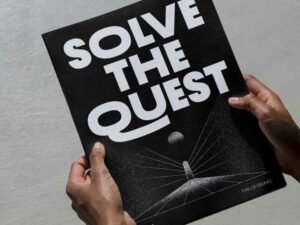Fostering Imagination through Hands-On Play
Imagination blooms when children are unencumbered and free to play and create. Hands-on play with building materials provides a singular way for kids to express ideas that would be difficult to put into words otherwise. As they build with magna tiles a forest, ocean, or desert, each individual piece fits together to form not just a place, but a new world. Children begin to play with architecture and design organically, finding pleasure in building towering creations or fancy patterns, then delights in destroying them and repeating them. The free play is a building block for real learning—offering limitless variations for adapting and individualizing each creation.
According to experts in early childhood teachings, such free play is essential because it makes children creators of their own pretend worlds. By staging performances with pets or making up imaginary beasts, they learn to be adaptable in thought, get exposed to cause and effect, and get to exercise their language. The role of play in early childhood is so significant that premier educational establishments are now promoting it as a central element in early learning environments. Pretend play does more than entertain; it assists in building significant skills in story-construction, in working with emotions, and in communicating ideas.
Why Develop Animal Worlds?
Animal-world construction introduces children to so much more than elementary building principles. Children begin to see patterns in nature, observe variations within a species, and experience empathy as they reflect upon their pets’ daily life. A cozy den for a polar bear or a large savanna for a herd of elephants prompts kids to think about what each creature needs. When they ask such things as “Does my frog need extra water?” or “Where can a giraffe obtain refuge from predators?”, they are practicing scientific thought without realizing it.
Making these queries real, students are challenged with decisions about what to build and how to organize space to resemble true habitats. They sort, cluster, and categorize by ecosystem, climate, or behavior, and observe. A hands-on type of teaching that is more likely to be retained over recitation, research proves that early students are better able to retain information with play that involves them actually touching materials to learn. Placing themselves in their animal caregiver or nature designer role, students form close personal relationships that lead to awe for the outdoors.
Main Cognitive Skills Learned Through Construction Activities
Habitat-construction activities offer sound cognitive development for children. They enhance their capacity to recall, reason problematically, and spatially reason actively. For instance, recalling that a beaver needs water for its dam calls upon children to retrieve information they’ve learned or tales they’ve been informed about, working retention of memory. Assembling a multi-story habitat that monkeys can ascend to or a secure fox burrow requires innovative solutions that engage both reason and imagination.
Spatial thinking is particularly important as kids make decisions about how to put together disparate shapes, consider symmetry, or create passageways and enclosures. These fundamental concepts create a basis for early math and engineering skills. Research after research demonstrates that construction play boosts mathematical knowledge, visual-spatial ability, and critical thought. Solving these open-ended tasks helps build self-confidence in a child’s ability to solve things independently—one that translates to school and everyday life.
How to Create an Intriguing Animal World
Building out a deep animal realm is a project that can be built upon down the road with your child’s ability and interest. Begin by asking kids to identify their favorite animal or one they’re curious to learn more about. That places them in control of the process and ownership of play. Next, ask them to envision the habitat itself: steamy jungle, busy pond, rocky mountain range? What are they most concerned about that would make their chosen animal at ease?
Plotting out a world adds a further level of interaction. Develop a simple plan or outline which features—such as rivers, caves, or trees—have most relevance. When building time is reached, make it a time to experiment: should the den be placed at the bottom of a hill, or does the monkey need slides joining tree to tree? If a building falls over, make it a time to experiment again and to describe what would make it more stable. When basics are in place, add toy animals, real-world materials such as sticks or leaves, or art materials for extra fun. And, to finish off, make it a time for made-up stories or to overcome challenges in their world, ranging from foraging for food to withstanding a rainstorm. The step-by-step process not only builds imagination but also helps to reinforce critical and adaptive thought.
Promoting Storytelling and Science Inquiry
Construction in the animal kingdom is best territory for children to pair invention with exploration. Working with animal figures through constructed situations, children invent storylines and fabricate challenges. “What would occur should there be a storm and it flood the beaver’s dam?” or “How would the cheetah achieve sustenance?” Children practice sequencing, predicting and developing vocabulary—skills essential to language acquisition. Story and science are both strong when they build solutions, test new phenomena, or simulate social interactions for animals.
Inserting real-world questions—such as “Why do flamingos stand with just one leg?” or “How does a turtle stay safe?”—gives children a reason to observe, predict, and test solutions. Simple experiments can be powerful, such as finding out which animal floats in an imaginary pond or what materials are used best for shelter. New research supports that STEM activities teach critical thinking during preschool, especially when used with story and imagination. Spontaneous exploration builds flexibility and courage that are hallmarks of a lifelong learner.
Making Animal Worlds Come to Life: Materials and Inspiration
Material diversification can evoke play that is more richly diverse. As a supplement to magnetic tiles, add small animal or figure toys that look—or radically reinterpret—the real animal kingdom. Gather outdoor materials like rocks (caves), sticks (trees or bridges), or leaves (nests). Colored fabric pieces can be used to represent ponds or meadows, and cottonballs are snowbanks or puffy skies. Pipe cleaners, recycled materials, or construction paper are for creative builders to fashion shelters, supplies, or new terrain.
Calling upon children to help gather, sort, or prepare materials makes them more engaged in the play and fosters organization. Always be certain to check for safety, with age-appropriate materials and supervising play with small parts. Varying materials or introducing new animal figures offers ongoing variety and makes children enthusiastic to create and recreate again and again.










